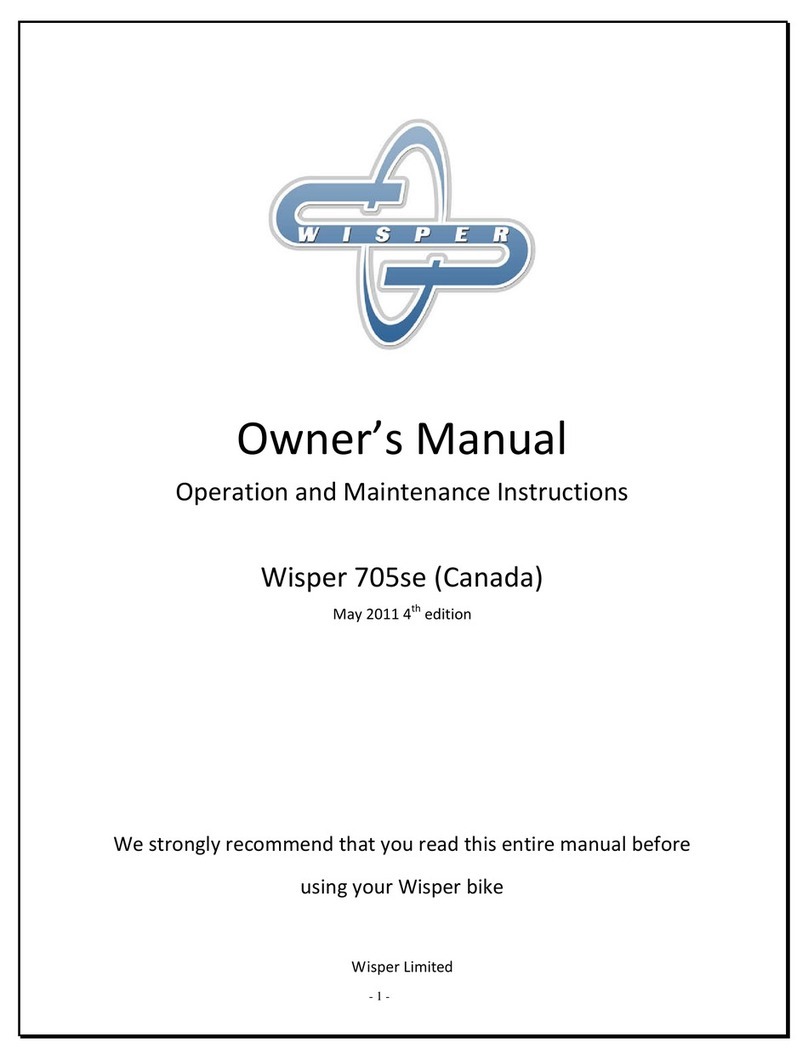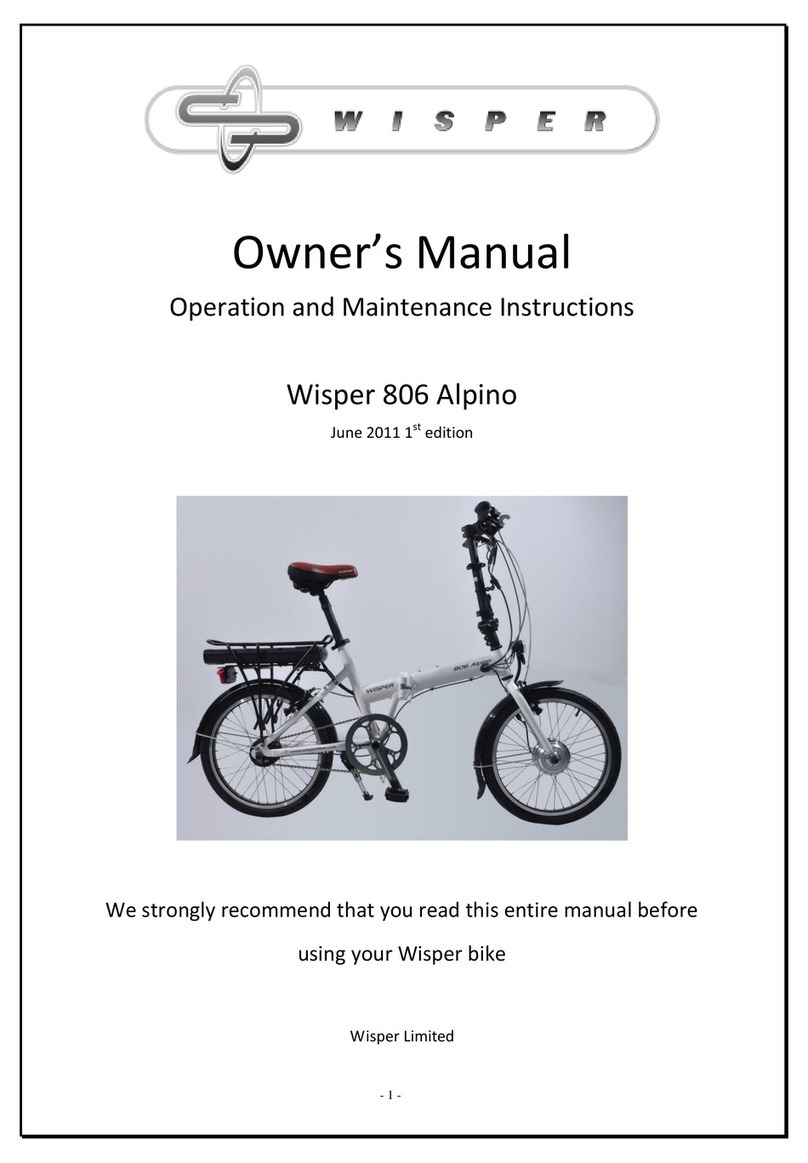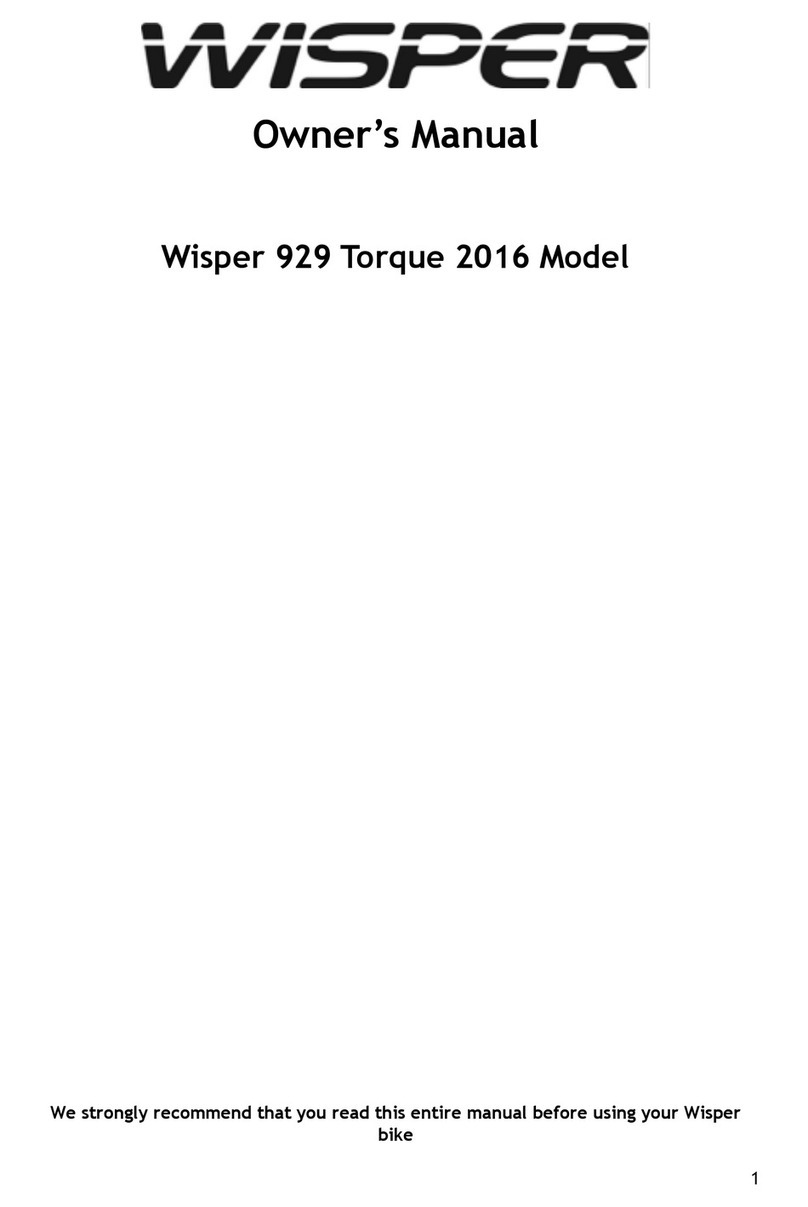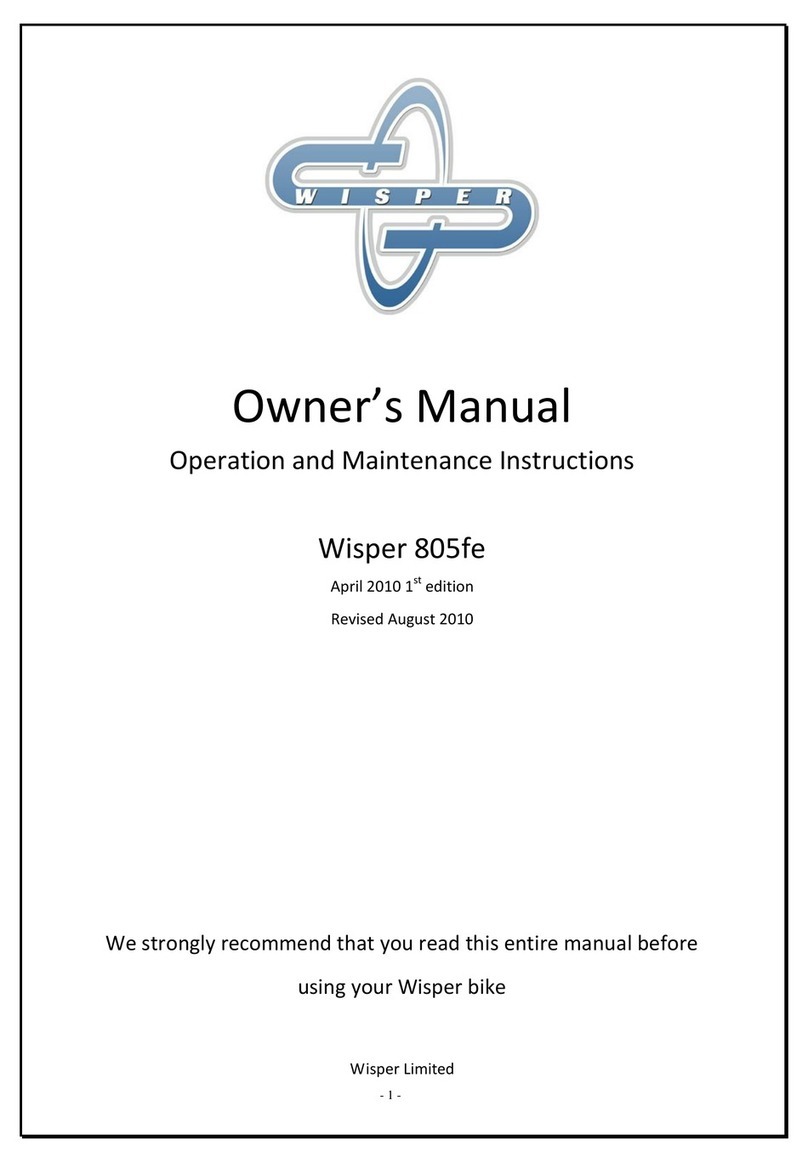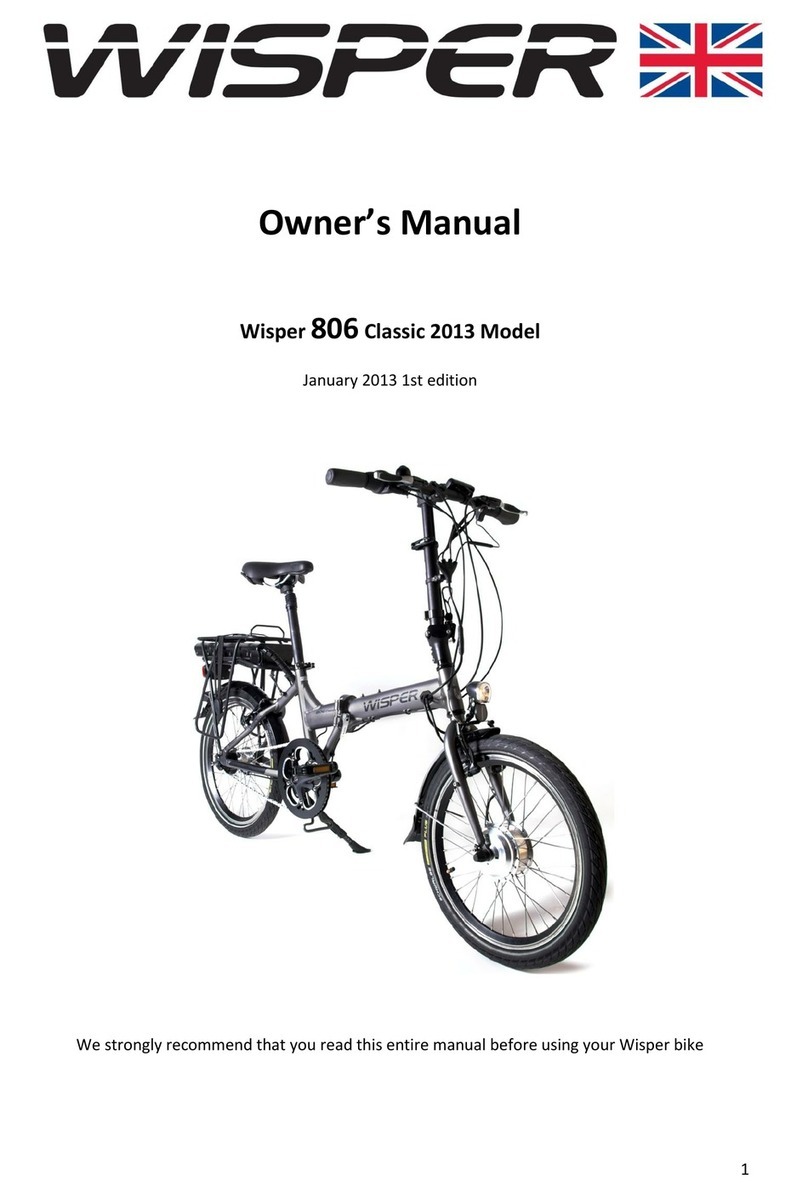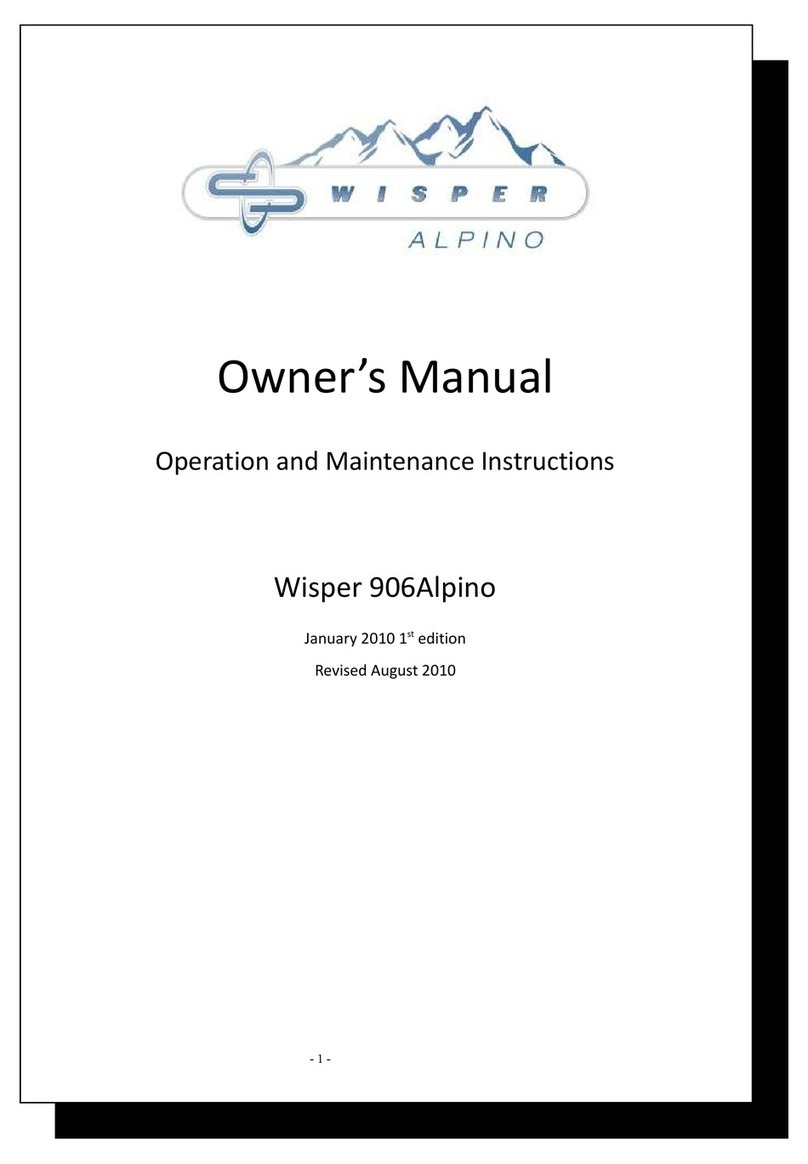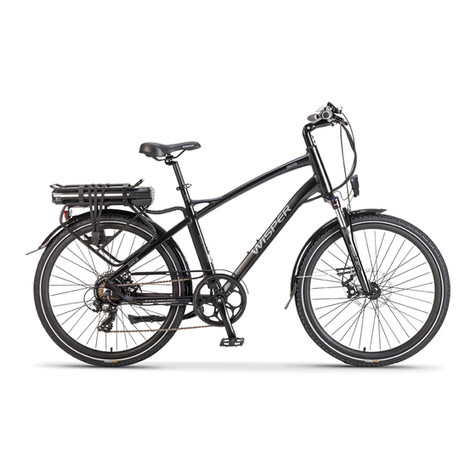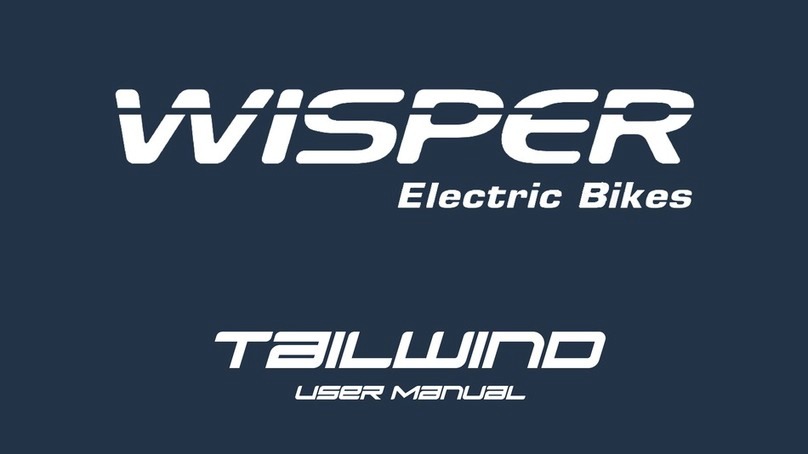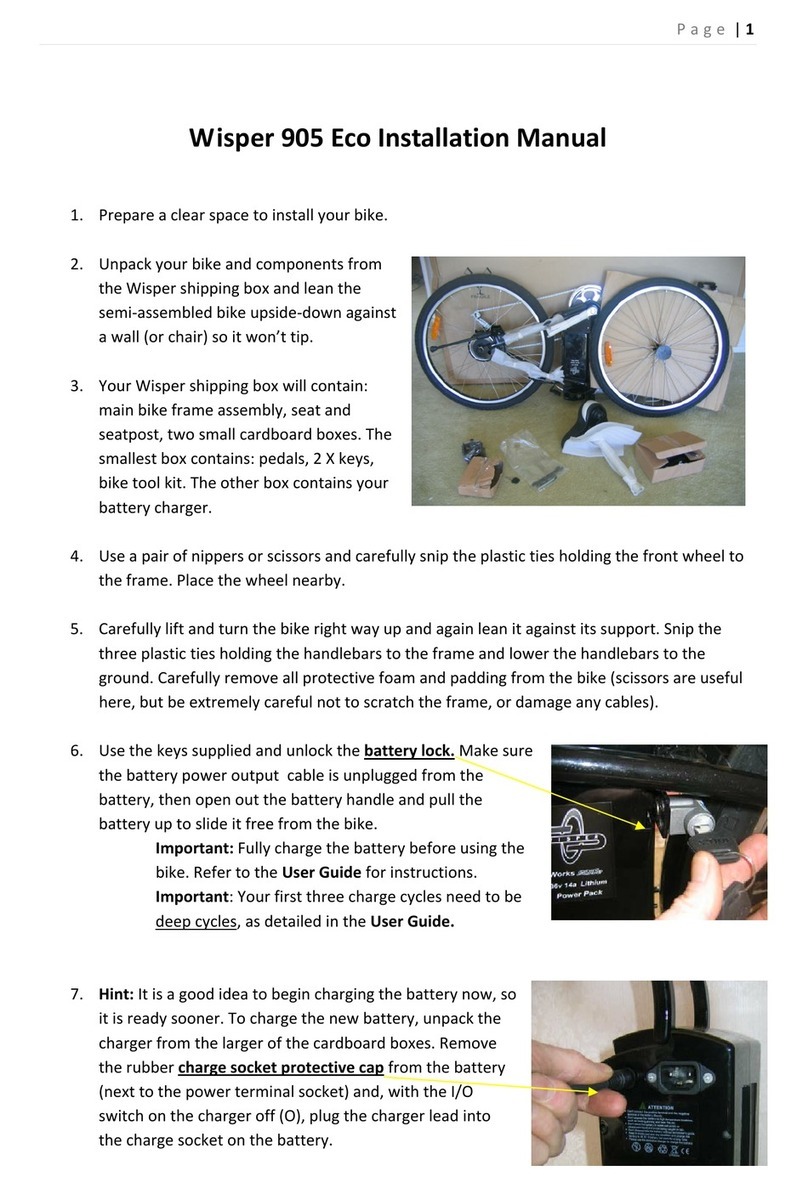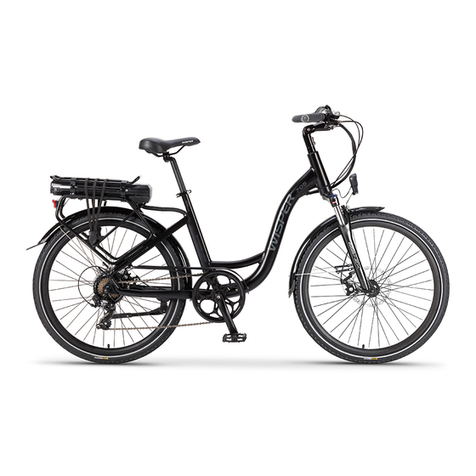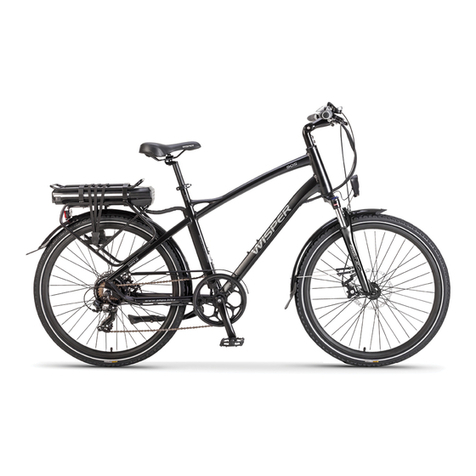
- 6 -
3.6 When leaving your bicycle during hot weather always leave in a shaded well
ventilated area
3.7 For best results always recharge the battery at room temperature
3.8 Be ore unloading the battery make sure it is turned o at the key, then raise the
saddle and unload the battery using its handle
3.9 I your battery is damaged or appears to be overheating or any reason
immediately return it to your retailer or advice and a sa ety check
4 Recharging your battery
4.1 First make sure the charger is turned o , connect
the output connector plug rom the charger to the
battery, connect the charger to the mains and turn
on the mains power. Turn on the charger. The red
and yellow lamps on the charger indicate the
battery is charging, when the yellow light turns
green the battery ully charged. Always turn o the
charger and disconnect rom the mains a ter
charging. Always disconnect the charger rom the
mains be ore disconnecting the charger rom the
battery. It is possible that the battery will take up to
12 hours to charge on the irst three charges.
4.2 When charging the battery always do so in a dry and well ventilated area.
4.3 Do not leave the charger connected to the mains when not in use.
5 Water
5.1 Your electric bicycle is rain and splash proo and can be used in all weathers.
5.2 The electrical components o the vehicle, such as motor, battery, and controller,
must not be submerged in water.
6 Maintenance and adjustments
6.1 IMPORTANT! Do not attempt to open the casings o the battery, motor or
controller it could be dangerous and all warranties will become void. I you
experience a problem contact our service department or your retailer.
6.2 Wheel spokes should be adjusted a ter 300 miles riding.
6.3 Handlebar and saddle tubes should never be raised beyond the maximum
indicated by a sa ety line around the tubes.
